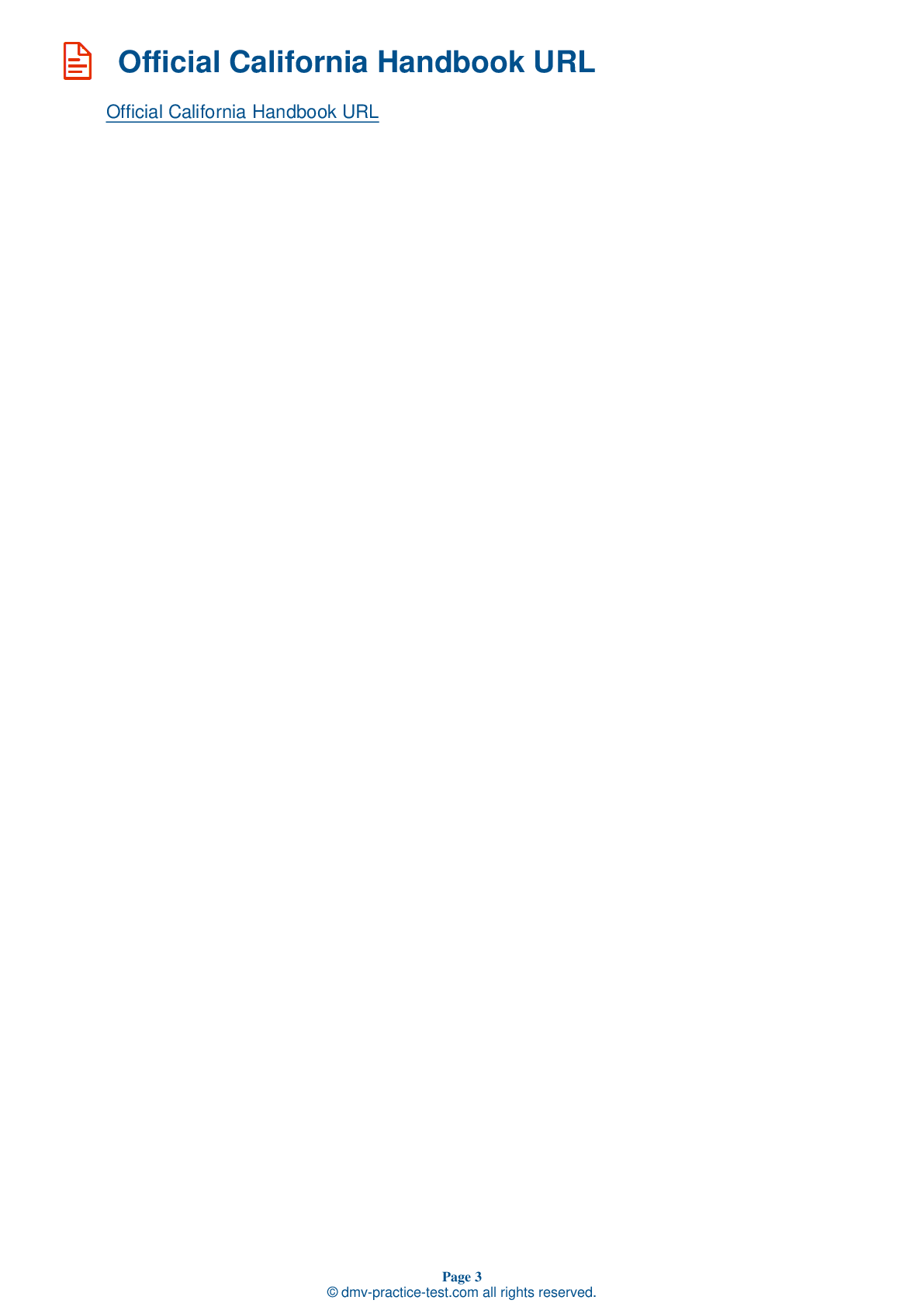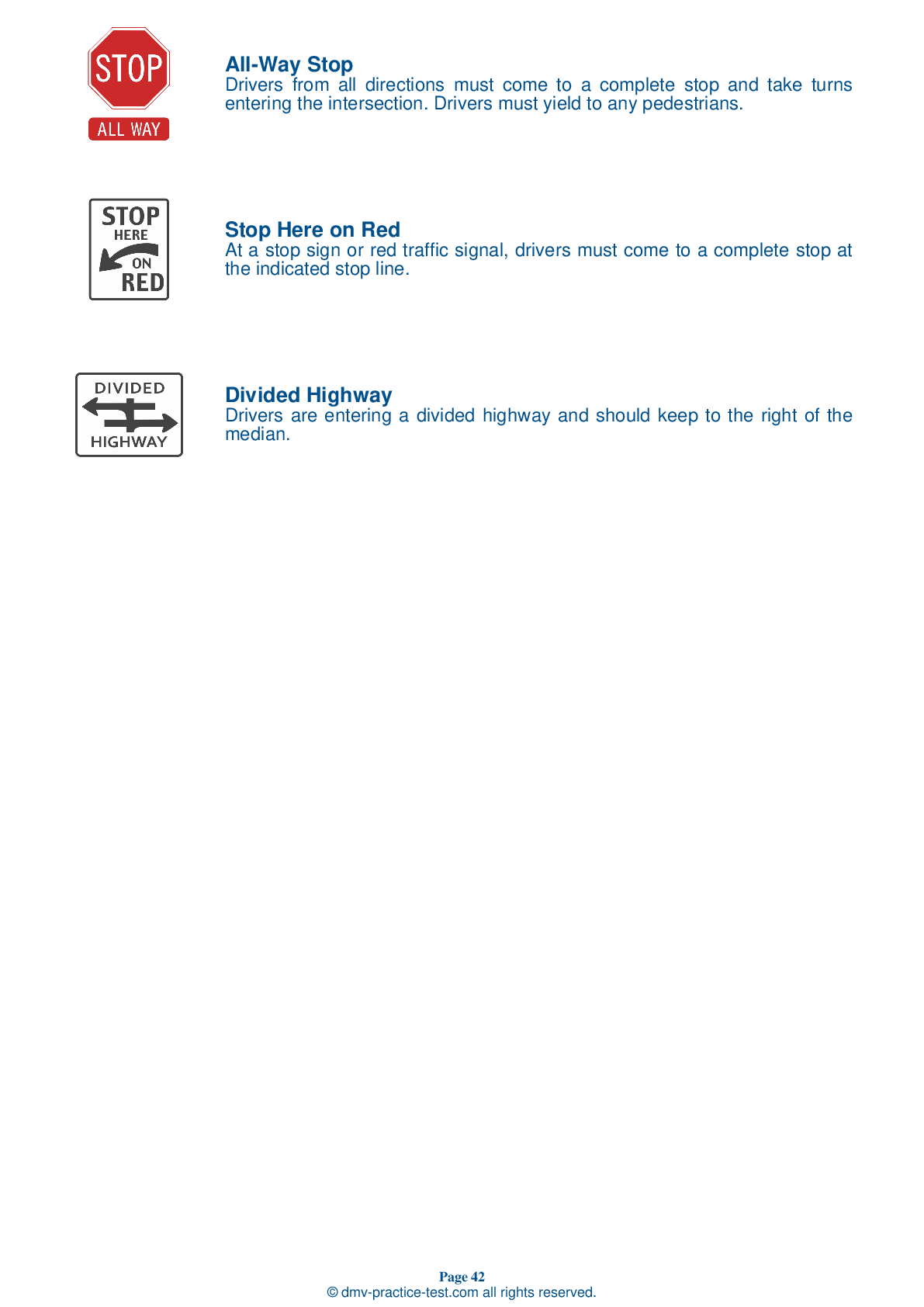FREE California DMV Practice Test #9 Page 3 of 6
This California DMV practice test includes 36 of the most vital road signs and rules questions taken directly from the official California Driver Handbook for 2025. Use genuine questions that are very similar (often identical!) to the DMV driving permit practice test and driver's license exam to prepare for the DMV driving permit test and driver's license exam.
To help you recall the topics, each ca dmv practice test question includes a hint and explanation. The written component of the official DMV test will consist of questions about regulations of the road, traffic signs, and driving statutes, as well as information from the Driver Handbook.
To get the required 83 percent passing score to be allowed to pass, you must correctly answer 38 out of 46 questions (or 30 out of 36 if you are over 18). Use this DMV practice exam to help you prepare for your California instruction permit or driver's license.
How does it work?
California residents using any form of testing help during the test will result in an automatic failure, and the DMV may take further action against your driving permit, so please don't cheat.
Ideally suited for:
- California Driver’s License
- Driver's Learner Permit in California
- CA Refresher Test for Senior Citizens CA
- CA Driver’s License Renewal
What to expect on the CA DMV exam:
- 36 questions
- To pass, you must have 30 accurate answers.
- a passing grade of 83%
- The minimum age to apply;15 ½
13 . Check your rearview mirrors:
When driving, do not develop a fixed stare. Frequently check your rearview mirrors so you know the positions of vehicles near you.
14 . This sign means:

Warning signs are usually yellow with black markings. This sign alerts drivers to where pedestrians may be crossing. If a pedestrian is crossing in a crosswalk marked with this sign, drivers must stop and remain stopped until the pedestrian is no longer in the crosswalk.
15 . You are driving on a freeway with a posted speed limit of 65 mph. Traffic is heavy and moving at 35 mph. The best speed for your vehicle is most likely:
Collisions are more likely to happen when one driver travels more quickly or more slowly than the other vehicles on the road. You should enter a freeway at or near the speed of traffic, unless the speed of traffic exceeds the legal speed limit.
16 . If you have trouble seeing other vehicles because of dust or smoke blowing across the roadway, you should drive more slowly and turn on your:
You must turn on your headlights any time conditions prevent you from seeing other vehicles. Other drivers may have trouble seeing you, too.
17 . This white sign means you should not pass other vehicles:

A white rectangular sign indicates that you must obey the stated rule. This sign means that drivers should not pass other vehicles for any reason.
18 . You are approaching a green traffic light and traffic is blocking the intersection. What is the best thing to do?
Even if your light is green, you must not enter an intersection unless you can get completely through the intersection before the light turns red. If you block the intersection, you can be cited.
Need Car Insurance? No problem!
Compare the best rates in California and find a personalized policy that meets your needs.
1. Are You Currently insured ?
2. Married ?
3. Do you own your Home?
4. Do you have more than 1 car ?
5. Have you or a Family Member Honorably Served in U.S. Military ?
6. Your Name
7. Age
8. Zip code
IMPORTANT REMINDER:Auto Insurance is Mandatory to drive in California. Get covered before you hit the road to avoid any fines.
Ranked by best match



